#African Rhino
Text

The African Rhinoceros | African scenery and animals (1804) | Samuel Daniell | Flickr
1 note
·
View note
Text
#good news#science#nature#environmentalism#environment#animals#conservation#rhinos#white rhino#africa#african white rhino
366 notes
·
View notes
Text
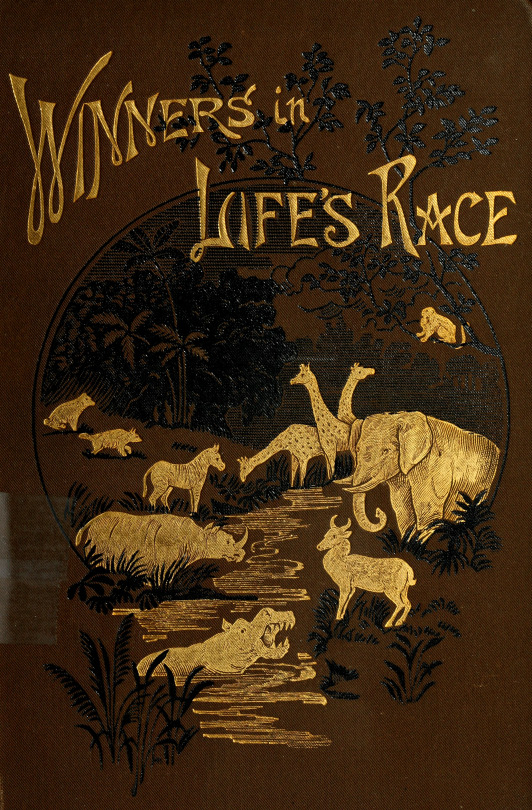
African fauna. The winners in life's race. 1891. Book cover.
Internet Archive
#book cover#covers#gold gilt#african fauna#animals#watering hole#gireffe#elephant#rhino#hippo#nemfrog#1891#19th century
198 notes
·
View notes
Text
This video makes me laugh because why are you yelling at a rhino like it's your neighbour's pet😂
#tumblr dump#south africa#africa#african holiday#african#rhinoceros#Rhino#Save the rhino#endangered species#wild animals#wildlife#breath of the wild#safari
13 notes
·
View notes
Text
Repost @sheldricktrust
"Run, Chamboi, run!
Much like his elephant counterpart, Korbessa, orphaned rhino Chamboi feels the need for speed. His Keepers take him on jaunts to the airstrip, where he can really stretch his legs. He often looks like he’s levitating!"
© Sheldrick Wildlife Trust / Francesco Grimaldi
#black rhino#endangered species#wild orphans#swt#sheldrick wildlife trust#kenya#africa#african wildlife
10 notes
·
View notes
Text

Solly Levi
Instagram: solly_levi
39 notes
·
View notes
Text

pegasus of the savanah
Started as a joke then I redrew it after having pieced the animals together. Ended up liking her
The joke edit vvv


#it's a rhino-zebra-okapi-giraffe-african grass owl hyrbid#yes ik okapi are just a different species of giraffe#artists of tumblr#creature#made up#I wanted to just. create something fun#joke#art#rhino#zebra#okapi#giraffe#african grass owl
14 notes
·
View notes
Text
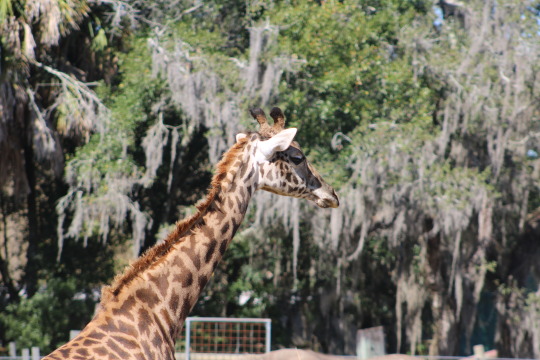

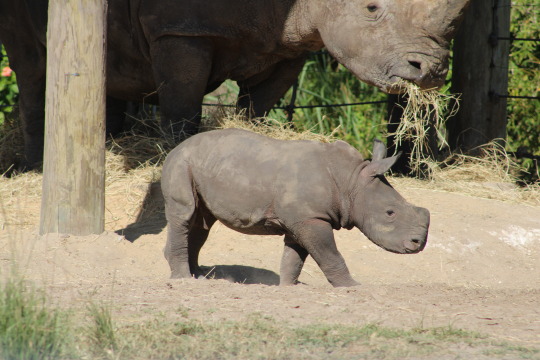


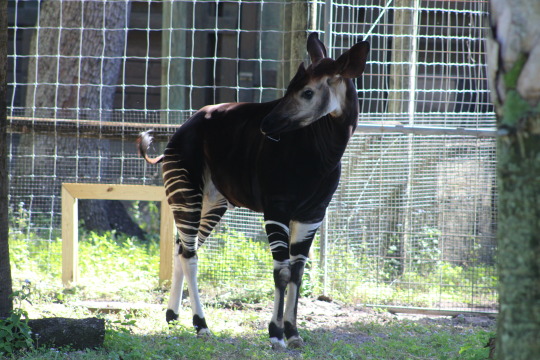
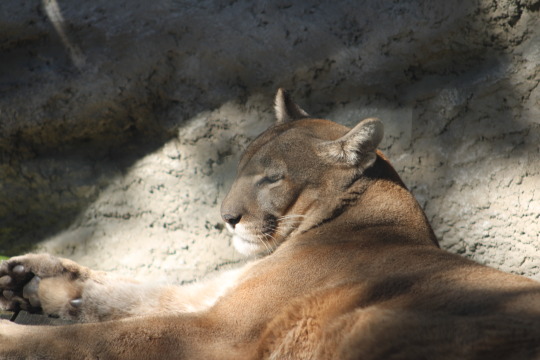

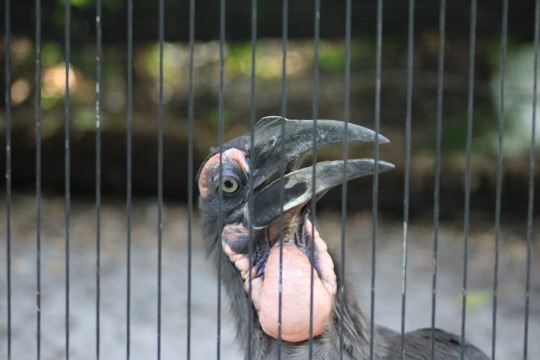

"Borrowed" my mom's good camera and got some really good pictures at the zoo yesterday
#if you recognize where i was no you dont :)#in order:#southern giraffe#silvery cheek hornbill#white rhino#african painted dog#shoebill#okapi#florida panther#sun bear#southern ground hornbill#violet turaco#photography
45 notes
·
View notes
Photo
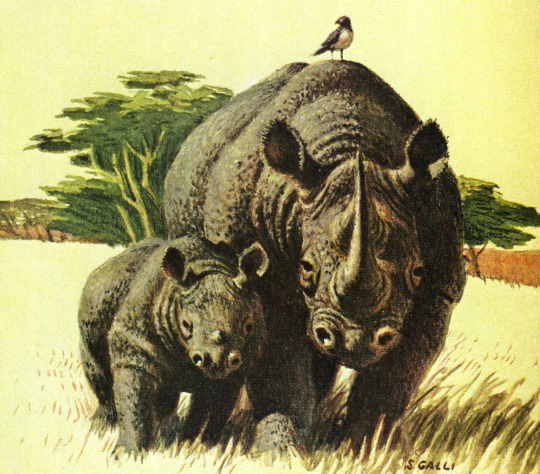
“Gun jammed, huh? Sucks to be you.”
Reader's Digest September 1972
#Illustration#vintage illustration#rhinoceros#rhino#african animals#1972#africa#1970s#1970's#funny#humor#humour
168 notes
·
View notes
Text

UAE G6 Rhino 155mm SPGs in Yemen, deployed against the Houthi government.
16 notes
·
View notes
Text






Scenes from the Waterberg. White Rhinoceros, Giraffe, African Painted Dog, Zebra, Ring-Necked Dove, Sunset.
#south africa#africa#original photography on tumblr#wildlife photography#waterberg#african birds#african painted dog#african wild dog#canid#zebra#dove#white rhino
14 notes
·
View notes
Text
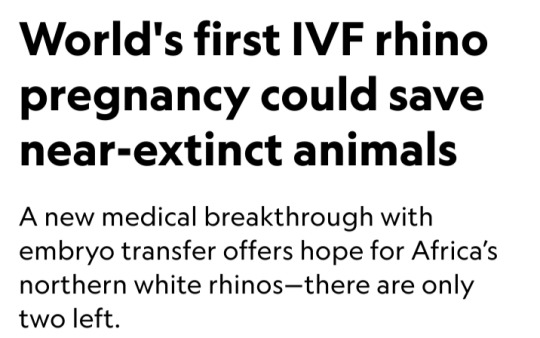

By Dina Fine Maron
January 24, 2024
Scientists have cleared a significant hurdle in the years-long effort to save Africa’s northern white rhinoceros from extinction with the first-ever rhino pregnancy using in vitro fertilization.
The lab-assisted pregnancy, which researchers will announce today, involved implanting a southern white rhino embryo in a surrogate mother named Curra.
The advance provides the essential “proof of concept” that this strategy could help other rhinos, says Jan Stejskal of the BioRescue project, the international group of scientists leading this research.
Curra died just a couple months into her 16-month pregnancy from an unrelated bacterial infection, Stejskal says.
However, the successful embryo transfer and early stages of pregnancy pave the way for next applying the technique to the critically endangered northern white rhino.
The process was documented exclusively by National Geographic for an upcoming Explorer special currently slated to air in 2025 on Nat Geo and Disney+.
BioRescue expects to soon implant a northern white rhino embryo into a southern white rhino surrogate mother.
The two subspecies are similar enough, according to the researchers, that the embryo will be likely to develop.
Eventually, this approach may also help other critically endangered rhinos, including the Asian Javan rhinoceros and the Sumatran rhinoceros, which each now number under 100 individuals, Stejskal says.
But the northern white rhino’s current situation is the most pressing by far.
There are no males left, and the only two remaining animals are both elderly females that live under armed guard on a reserve in a 700-acre enclosure in Kenya called Ol Pejeta Conservancy.
The boxy-jawed animals once roamed across central Africa, but in recent decades, their numbers have plummeted due to the overwhelming international demand for their horn, a substance used for unproved medicinal applications and carvings.
Made from the same substance as fingernails, rhino horn is in demand from all species, yet the northern white rhino has been particularly hard-hit.
"These rhinos look prehistoric, and they had survived for millions of years, but they couldn’t survive us,” says Ami Vitale, a National Geographic Explorer and photographer who has been documenting scientists’ efforts to help the animals since 2009.
“If there is some hope of recovery within the northern white rhino gene pool — even though it’s a substantially smaller sample of what there was — we haven’t lost them,” says conservation ecologist David Balfour, who chairs the International Union for the Conservation of Nature’s African rhino specialist group.
Blueprints for rhino babies
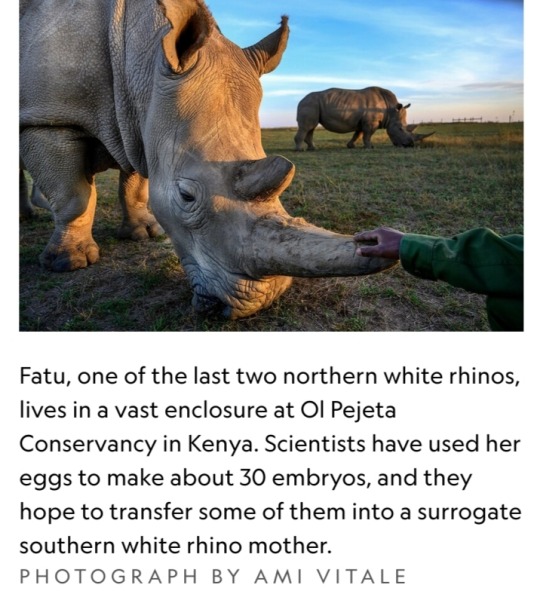
To stave off the animal’s disappearance, BioRescue has used preserved sperm from northern white rhinos and eggs removed from the younger of the two remaining females.
So far, they’ve created about 30 preserved embryos, says Thomas Hildebrandt, the head scientist of BioRescue and an expert in wildlife reproduction based at the Leibniz-Institute of Zoo and Wildlife Research in Berlin.
Eventually, the team plans to reintroduce northern white rhinos into the wild within their range countries.
“That’d be fantastic, but really, really far from now—decades from now,” says Stejskal.
Worldwide, there are five species of rhinoceros, and many are in trouble.
Across all of Africa, there are now only about 23,000 of the animals, and almost 17,000 of them are southern whites.
Then there are more than 6,000 black rhinos, which are slightly smaller animals whose three subspecies are critically endangered.
In Asia, beyond the critically endangered Javan and Sumatran rhinos, there’s also the greater one-horned rhino, whose numbers are increasing and currently are estimated to be around 2,000.
The BioRescue effort has experienced many setbacks, and even though the team now has frozen embryos, the clock is ticking.
The researchers intend to use southern white rhinos as surrogate moms for the northern white rhino embryos.
However, scientists want any northern white rhino calves to meet and learn from others of their kind, which means they need to be born before the two remaining females die.
“These animals learn behaviors — they don’t have them genetically hard-wired,” says Balfour, who’s not involved with the BioRescue work.
But birthing new animals in time will be a challenge.
“We’re really skating on the edge of what’s possible,” he says, “but it’s worth trying.”
Najin, the older female, will be 35 this year, and Fatu will be 24.
The animals, which were born in a zoo in the Czech Republic, are expected to live to about 40, says Stejskal, who also serves as director of international projects at the Safari Park Dvůr Králové, the zoo where the animals lived until they were brought to Kenya in 2009.
Impregnating a rhino
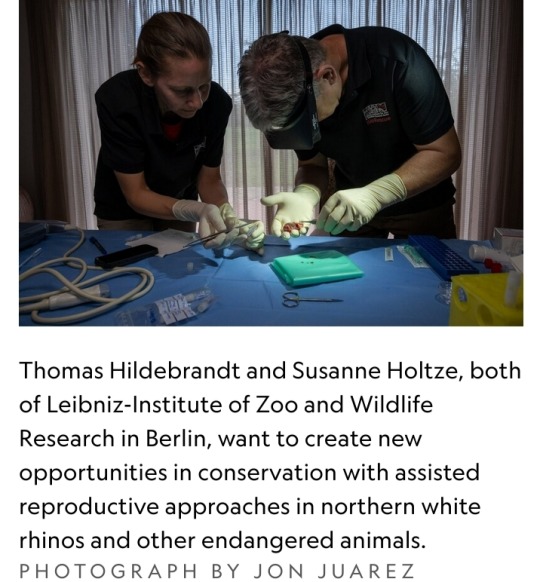
The next phase of BioRescue’s plan involves implanting one of their limited number of northern white rhino embryos into a southern white rhino surrogate mother — which the group plans to do within the next six months, Stejskal says.
They’ve identified the next surrogate mother and set up precautions to protect her from bacterial infections, including a new enclosure and protocols about disinfecting workers’ boots.
But now, they must wait until the female rhino is in estrus — the period when the animal is ready to mate — to implant the egg.
To identify that prime fertile time, they can’t readily perform regular ultrasounds at the conservancy as they might do in a zoo.
Instead, they have enlisted a rhino bull that has been sterilized to act as a “teaser” for the female, Hildebrandt says, adding that they must wait a few months to make sure that their recently sterilized male is truly free of residual sperm.
Once the animals are brought together, their couplings will alert conservancy staff that the timing is right for reproductive success.
The sex act is also important because it sets off an essential chain of events in the female’s body that boosts the chances of success when they surgically implant the embryo about a week later.
"There’s little chance the conservancy staff will miss the act. White rhinos typically mate for 90 minutes," Hildebrandt says.
What’s more, while mounted on the females, the males often use their temporary height to reach tasty plant snacks that are generally out of reach.
Boosting genetic diversity
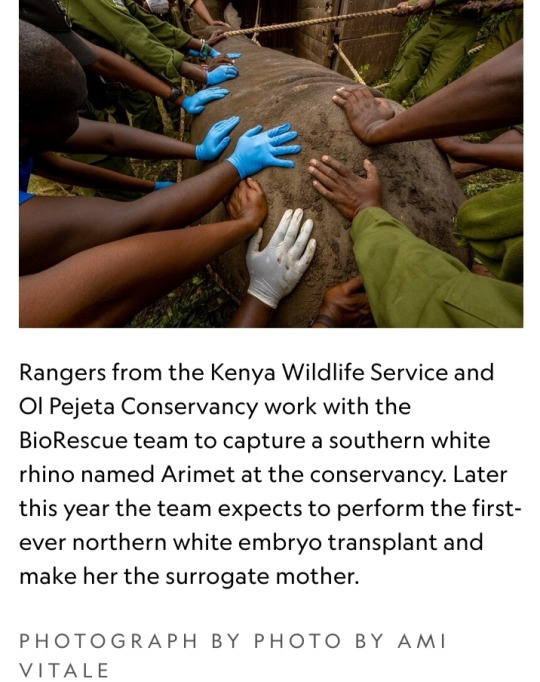
With so few northern white rhinos left, their genetic viability may seem uncertain.
But the BioRescue team points to southern white rhinos, whose numbers likely dropped to less than 100, and perhaps even as few as 20, due to hunting in the late 1800s.
Government protections and intense conservation strategies allowed them to bounce back, and now there are almost 17,000.
“They have sufficient diversity to cope with a wide range of conditions,” says Balfour.
Researchers don’t know exactly how many southern white rhinos existed a century ago, he says, but it’s clear that the animals came back from an incredibly low population count and that they now appear healthy.
Beyond their small collection of embryos, the BioRescue team hopes to expand the northern white rhino’s gene pool by drawing from an unconventional source — skin cells extracted from preserved tissue samples that are currently stored at zoos.
They aim to use stem cell techniques to reengineer those cells and develop them into sex cells, building off similar work in lab mice.
According to their plan, those lab-engineered sex cells would then be combined with natural sperm and eggs to make embryos, and from there, the embryos would be implanted into southern white rhino surrogate mothers.
Such stem cell reprogramming work has previously led to healthy offspring in lab mice, Hildebrandt says, but rhinos aren’t as well-studied and understood as mice, making this work significantly challenging.
A global effort
The northern white rhino revitalization venture has cost millions of dollars, supported by a range of public and private donors, including the German Federal Ministry of Education and Research.
Other partners on the effort include the Leibniz Institute for Zoo and Wildlife Research, the Czech Republic’s Safari Park, Kenya Wildlife Service, Ol Pejeta Conservancy, and also Katsuhiko Hayashi, a professor of genome biology at Osaka University in Japan who conducted the mouse stem cell research.
Building upon Hayashi’s stem cell techniques could ultimately bring the northern white rhino gene pool up to 12 animals — including eggs from eight females and the semen of four bulls, according to Stejskal.
An alternative approach to making more babies, like crossbreeding northern and southern white rhinos, would mean the resulting calves wouldn’t be genetically pure northern white rhinos, Hildebrandt notes.
The two subspecies look quite similar, but the northern version has subtle physical differences, including hairier ears and feet that are better suited to its swampy habitat.
The two animals also have different genes that may provide disease resiliency or other benefits, Hildebrandt says.
There are unknown potential differences in behavior and ecological impact when populating the area with southern white rhinos or cross-bred animals.
"The northern white rhino is on the brink of extinction really only due to human greed,” Stejskal says.
“We are in a situation where saving them is at our fingertips, so I think we have a responsibility to try.”
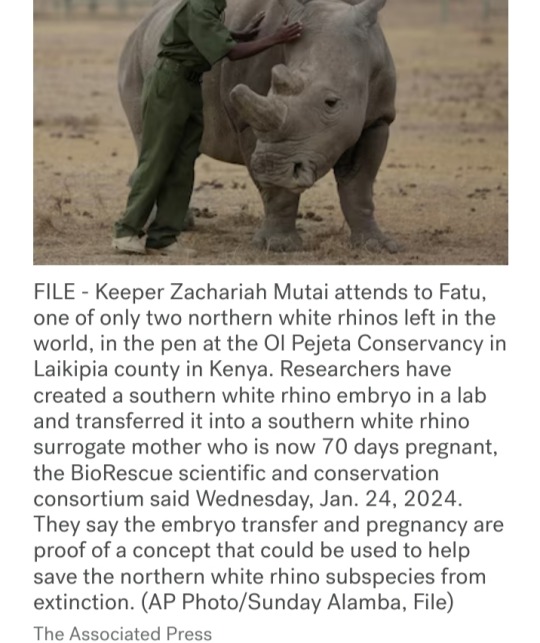
🩶🦏🩶
#northern white rhinoceros#rhino embryo transfer#in vitro fertilization#IVF#southern white rhinoceros#critically endangered animals#National Geographic#BioRescue#rhino horn#International Union for the Conservation of Nature#African rhino specialist group#Thomas Hildebrandt#German Federal Ministry of Education and Research#Leibniz Institute for Zoo and Wildlife Research#Kenya Wildlife Service#Ol Pejeta Conservancy#Katsuhiko Hayashi#genome biology#IVF rhino pregnancy
9 notes
·
View notes
Text

21 notes
·
View notes
Text
For #TilesOnTuesday + a belated #SaveTheRhinoDay:
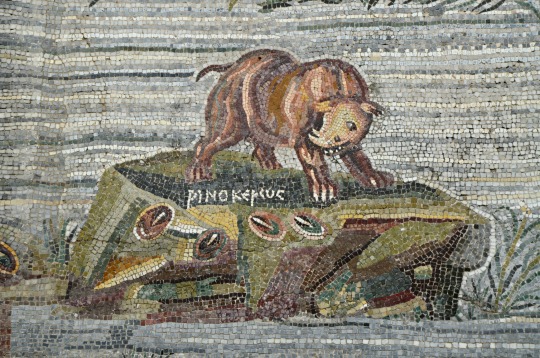
“A two-horned African rhinoceros ‘PINOKEPOC’ on the Nilotic mosaic of the flooding of the river Nile in Egypt, from the Sanctuary of Fortuna Primigenia at Praeneste, c. 100 BCE, Palestrina Museo Archeologico.”
#Tiles on Tuesday#Save the Rhino Day#animal holiday#ancient art#Nilotic scene#mosaic#rhino#rhinoceros#African wildlife#African animals#animals in art#ancient Egypt#ancient Roman art
31 notes
·
View notes
Text

#calf#rhino#rhonoceros#white rhino#africa#namibia#wildlife#nature#savanna#horn#travels#endangered#white rhinoceros#waterberg wilderness#safari#baby rhino#baby animal#african animals#wildlife photography#animal photography#travel blog#grazing#animals of africa#herbivore#namibian#anaimals#animal#bush#outdoor photography
8 notes
·
View notes
Text
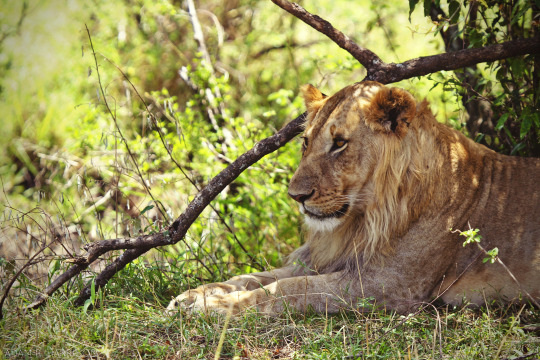
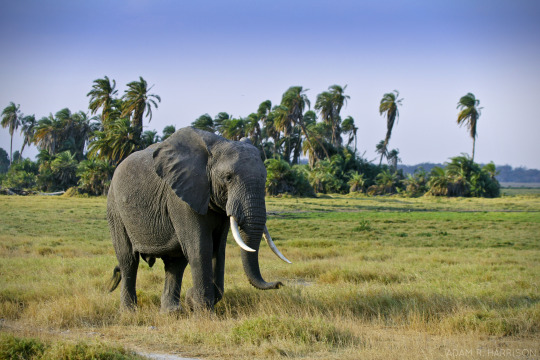
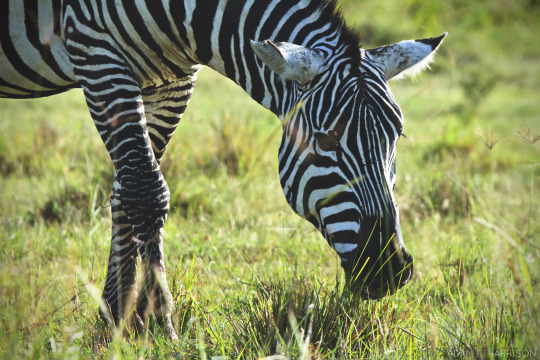


Harri's Wildlife Photography // Maasai Mara, Amboseli, Nakuru // Kenya // September 2013
www.adamrharrison.com
#kenya#maasai mara#amboseli#amboseli national park#nakuru#lake nakuru#lions#elephants#zebras#rhinoceros#rhinos#monkeys#african lion#african elephant#wildlife#animals#wildlife photography#animal photography#safari#african safari#kenya safari tours#toronto photographer#travel#travel photos#travel photo blog#travel photography#travel pics#travelling#photography#photographer
9 notes
·
View notes